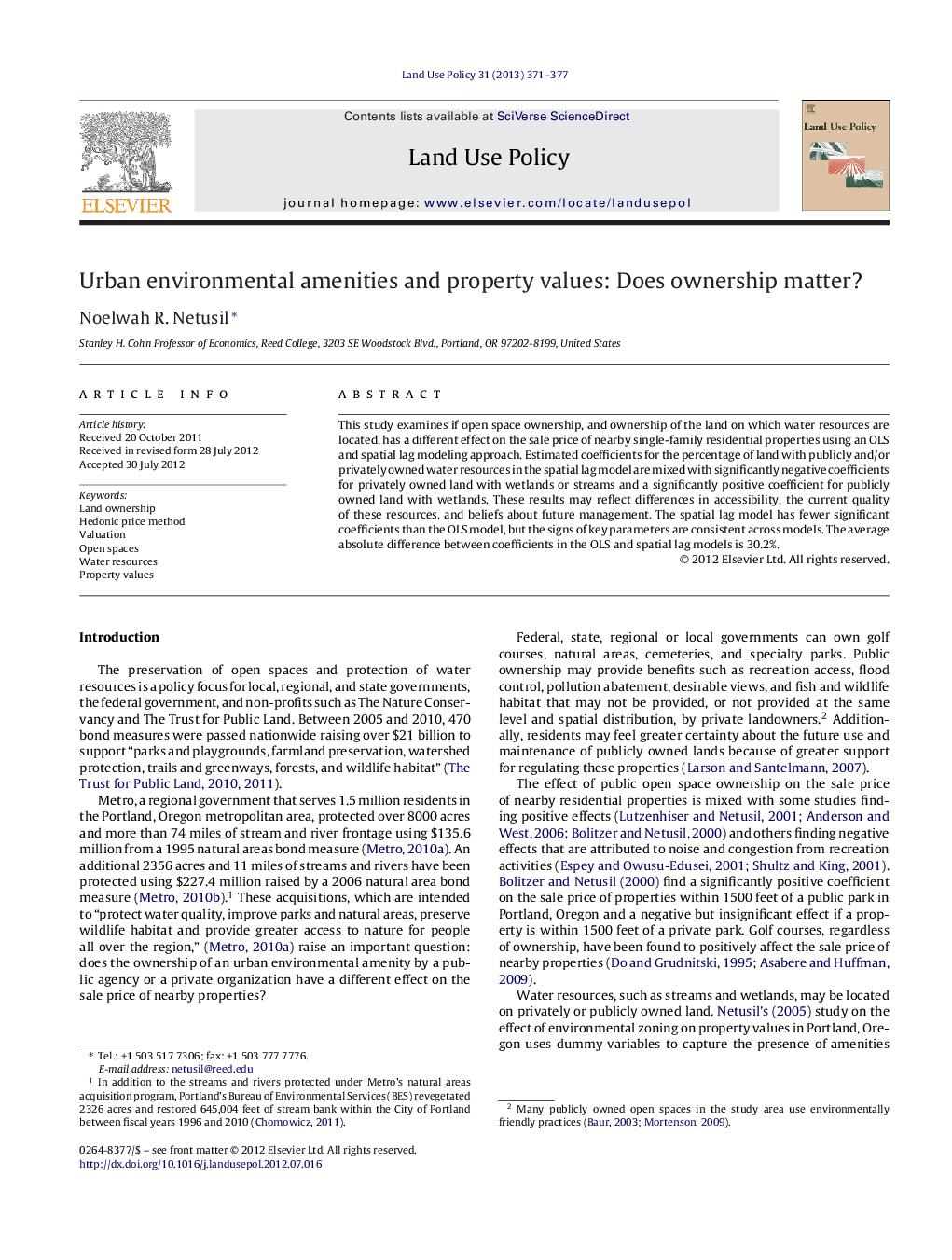| Article ID | Journal | Published Year | Pages | File Type |
|---|---|---|---|---|
| 93093 | Land Use Policy | 2013 | 7 Pages |
This study examines if open space ownership, and ownership of the land on which water resources are located, has a different effect on the sale price of nearby single-family residential properties using an OLS and spatial lag modeling approach. Estimated coefficients for the percentage of land with publicly and/or privately owned water resources in the spatial lag model are mixed with significantly negative coefficients for privately owned land with wetlands or streams and a significantly positive coefficient for publicly owned land with wetlands. These results may reflect differences in accessibility, the current quality of these resources, and beliefs about future management. The spatial lag model has fewer significant coefficients than the OLS model, but the signs of key parameters are consistent across models. The average absolute difference between coefficients in the OLS and spatial lag models is 30.2%.
► This study examines if ownership of an urban environmental amenity by a public agency or a private organization has a different effect on the sale price of nearby single-family residential properties using ordinary least squares and spatial lag models. ► Estimated coefficients on public and private water resources are different from each other. ► Correcting for spatial relationships results in fewer significant coefficients but does not change the sign of key parameters. ► The hypotheses of equal effect on sale price if nearby streams or wetlands are on public or private lands are rejected for the OLS and spatial lag models.
